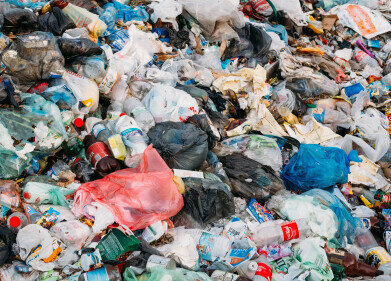Environmental Laboratory
What Technologies Will Enable Net-Zero Emissions?
May 29 2021
In 2019, the UK government became the world’s first major economy to enshrine its net-zero emissions target into national law. Under the legislation, the entire country will have to achieve carbon neutrality by 2050, marking an ambitious departure from the current status quo.
Some encouraging strides have already been in environmental terms, such as the phased shutdown of the British coal sector and an upturn in the popularity of renewable energy sources across the country. However, it will require the development and deployment of several new technologies if the government is going to be able to achieve its objectives and enable net-zero emissions in under 30 years. Here are a few of the most noteworthy technologies that are currently on the table:
Advanced monitoring equipment
The first step in solving any problem is fully understanding it. While our ability to monitor and analyse the concentrations of various pollutants and gases in our atmosphere has advanced significantly in recent decades, there is always room for improvement. Satellite technology is one area of research which holds particular potential, given that it can substantially expand our capacity to understand the localisation and severity of global emissions on a real-time basis. The article How the NPL ‘Star’ facility can support better climate monitoring from space has more information on the latest developments in this are for those interested.
Batteries
The scientific community seems largely to be in consensus that renewables hold the long-term solution to our energy security issues. While nuclear has immense potential, alternatives such as solar and wind power are greener, safer and far simpler methods of energy generation. Unfortunately, they are also intermittent, meaning that when the sun doesn’t shine and the wind doesn’t blow, the power dries up. That’s where large-scale batteries come in. To date, the technology for storing renewable energy on a commercial scale has not yet been developed, but a breakthrough in the sector could revolutionise the way we generate and consume energy.
CCUS
Carbon capture, utilisation and storage (CCUS) is the practice of removing CO2 from the emissions stream of a factory or power plant before it has a chance to contaminate the atmosphere, then either using the gas for another purpose or storing it underground. The same principles are also being applied to devices which can extract carbon directly from the environment, thus undoing the harm wrought by previous emissions already present in the atmosphere. While very encouraging, the technology is still in its infancy and requires further research to work out issues with gas purity analysis, affordability and other concerns that have prevented it from being deployed on a mass scale to date.
Digital technologies
Emerging new technologies like the Internet of Things (IoT), machine learning and artificial intelligence (AI) are promising methods of optimising current operational strategies to achieve maximum energy efficiency. Not only can these smart technologies ensure that we use the resources at our disposal as wisely as possible, but they can also automate more menial tasks to computers and robots, thus freeing up the human workforce to tackle more interesting and lucrative endeavours. As such, they hold huge possibilities for enhancing the green credentials of the way we do business now and in the future.
Digital Edition
IET 34.2 March 2024
April 2024
Gas Detection - Biogas batch fermentation system for laboratory use with automatic gas analysis in real time Water/Wastewater - Upcycling sensors for sustainable nature management - Prist...
View all digital editions
Events
Apr 30 2024 Melbourne, Australia
Apr 30 2024 Birmingham, UK
May 03 2024 Seoul, South Korea
May 05 2024 Seville, Spain
May 06 2024 Minneapolis, MN, USA


















